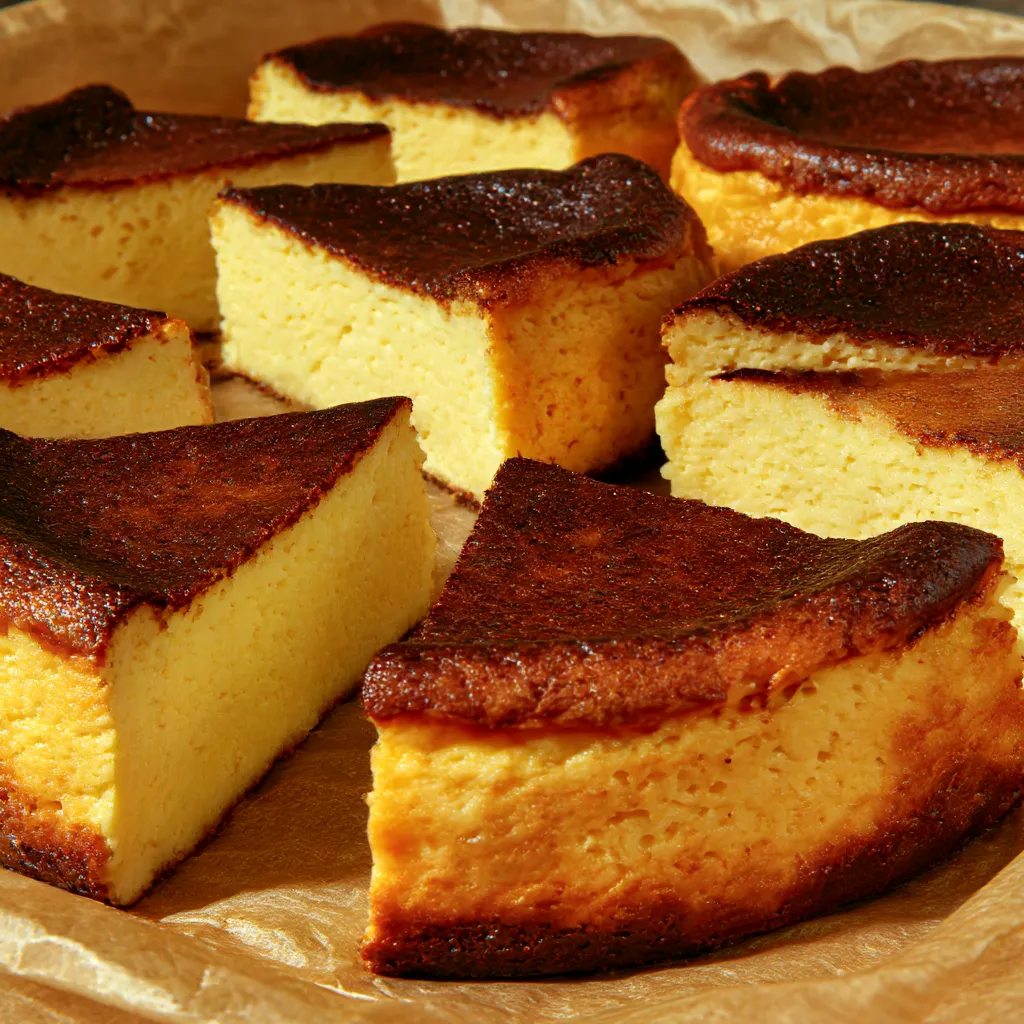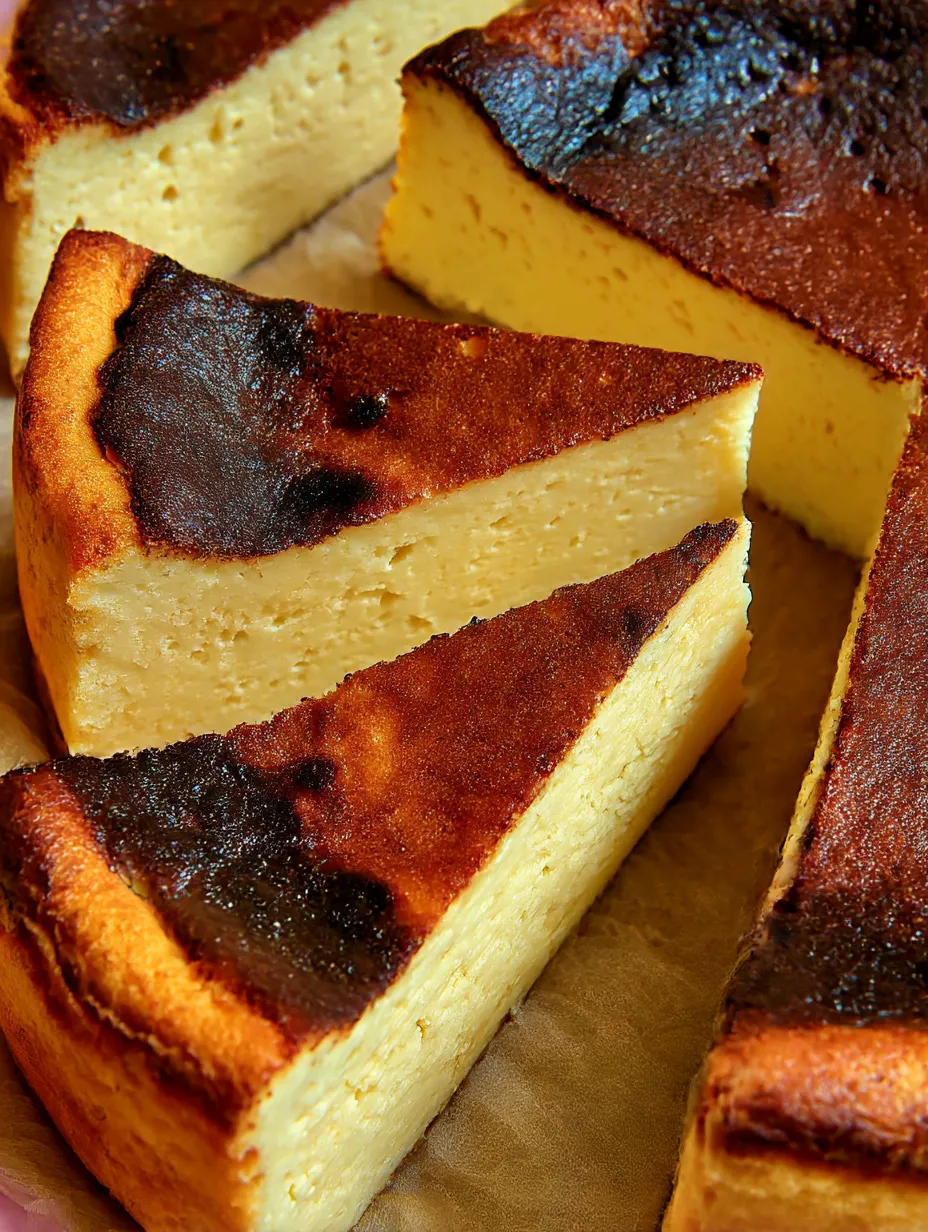 Pin
Pin
This Basque-style cheesecake is perfect for anyone craving a showstopping dessert with a uniquely creamy center and caramelized exterior. With no crust and a dramatic burnished top, it is as much about the rustic look as the rich flavor. The luscious texture and balanced sweetness have made it a regular favorite at my family gatherings, especially when I want to impress with minimal effort.
The first time I made this, I was amazed at how easy it was to get such an elegant dessert. Now it is my go to whenever I want the wow factor without a ton of work.
Ingredients
- Cream cheese: full fat softened to room temperature for extra smoothness use a high quality block cream cheese for best texture
- Granulated sugar: ensures the right sweetness and helps create that signature caramelized top opt for superfine sugar if you have it
- Large eggs: at room temperature add richness and help the cake set properly fresher eggs make a difference in the final texture
- Lemon juice: brightens the whole cake and balances the creaminess choose a fresh lemon for best flavor
- Pure vanilla extract: provides depth and warmth a real extract offers the richest taste
- Salt: just a pinch is necessary to heighten all the other flavors use fine sea salt for best blending
- Whipping cream: at least 35 percent fat gives the cake its dreamy texture use fresh cold cream for best volume
- All purpose flour: just enough for a slight stability while staying creamy sift before adding to avoid lumps
Step by Step Instructions
- Prepare the Pan:
- Line an eight inch springform pan with two big sheets of parchment paper arranged so they rise above the pan edges. Pleat and crease as needed to fit and do not worry if edges look rustic
- Make the Cream Cheese Base:
- Beat the cream cheese in a large bowl using an electric mixer until completely smooth. Add three quarters cup sugar gradually mixing until you see no lumps and the mixture looks creamy. Make sure to scrape the bowl a few times for a truly smooth base
- Add Eggs and Flavorings:
- Add eggs one at a time mixing each in completely before adding the next. Scrape down the bowl between each egg to keep the mixture uniform then blend in lemon juice vanilla and salt
- Prepare Cream Flour Mixture:
- In a separate bowl whisk together the flour one teaspoon sugar and half the whipping cream until perfectly smooth. This small step ensures the flour integrates seamlessly later
- Combine Batter:
- Pour your flour cream mixture into the main batter and mix until you get a smooth consistency. Gradually add the remaining cream beating gently until the mixture is satiny and pourable
- Strain and Bake:
- Pour the batter through a sieve directly into your lined pan catching any stray lumps. Bake at four hundred fifty degrees Fahrenheit for twenty two to twenty six minutes. You want the top very dark but the center should still tremble when shaken
- Cool and Chill:
- Cool the cheesecake in the pan until completely room temperature. It will look deflated but that is exactly right. Chill in the fridge for at least eight hours or overnight for the creamiest texture
- Serve:
- Peel back the parchment and cut the cheesecake into wedges. Serve at room temperature for the best flavor sometimes I pair it with sherry to highlight its rich notes
 Pin
Pin
I love how the vanilla makes the cream cheese flavor shine The first time I shared this cake with my sister she said it reminded her of a cross between custard and cheesecake We now make it to celebrate birthdays and holidays
Storage Tips
Wrap the cheesecake tightly in plastic and refrigerate for up to five days for optimal freshness. To freeze cut into individual slices wrap well and freeze for up to one month. Thaw in the refrigerator overnight before serving.
Ingredient Substitutions
You can use mascarpone for part of the cream cheese if you like it even richer. Plain Greek yogurt can substitute up to half of the cream cheese but the flavor will be more tangy. If you are out of lemon juice try a splash of white wine vinegar for a subtle kick.
Serving Suggestions
Serve this cheesecake at room temperature to fully appreciate its creamy texture. Try topping it with fresh strawberries roasted figs or a dusting of cocoa powder. For a special touch drizzle with honey and a pinch of sea salt flakes just before serving.
Cultural Context
Burnt Basque cheesecake was born in San Sebastián Spain at La Viña bar in the nineteen nineties. Its rustic charm comes from its high temperature bake and parchment lined sides which allow for dramatic coloring and a custardy core. Now you will find it all over the world but the classic version remains beloved for its simplicity and bold flavor.
Recipe FAQs
- → What makes Basque-style cheesecake unique?
Basque-style cheesecake stands out for its deeply caramelized exterior and silky smooth, almost custardy interior. The high baking temperature gives it a signature burnt look and rich flavor, setting it apart from traditional cheesecakes.
- → Can I use low-fat cream cheese?
For the best creamy texture and rich taste, it's recommended to use full-fat cream cheese. Low-fat versions may result in a less velvety and more crumbly cake.
- → Why bake at such a high temperature?
Baking at 450°F creates the signature burnt, caramelized crust while keeping the interior soft and creamy. The contrast enhances both texture and flavor.
- → How do I know when it's done?
The top should be deeply browned and the center still quite jiggly. It will set further as it cools and chills overnight in the refrigerator.
- → What should I serve it with?
Enjoy it plain at room temperature or pair with a glass of sherry or coffee for a delightful finish to any meal.
